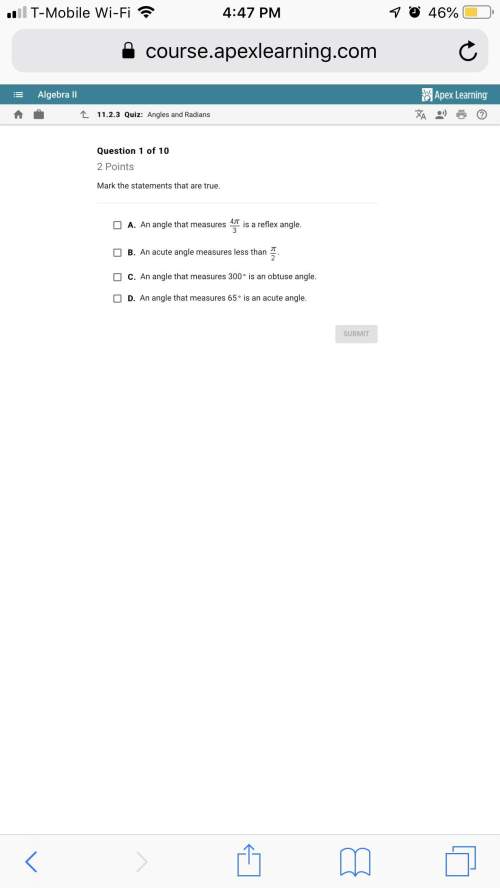
Mathematics, 25.10.2021 21:40 lily3934
Consider the diagram below. The large rectangle represents a piece of construction paper. The small rectangle represents a piece of the construction paper that has been cut out. The area of the large rectangle is 100 cm2. The area of the small rectangle is 25 cm2. What is the area of the construction paper that remains?


Answers: 3


Another question on Mathematics

Mathematics, 21.06.2019 16:30
What is the remainder when 2872 is divided by 76? a) 51 b) 57 c) 60 d) 63
Answers: 2

Mathematics, 21.06.2019 16:40
Which statement accurately explains whether a reflection over the y-axis and a 270° counterclockwise rotation would map figure acb onto itself? a coordinate plane with figure acb with point a at 1, 1, c at 3, 4 and b at 5, 1 yes, a″c″b″ is located at a″(1, 1), c″(4, 3), and b″(1, 5) yes, a″c″b′ is located at a″(1, 1), c″(3, 4), and b″(5, 1) no, a″c″b″ is located at a″(1, 1), c″(4, 3), and b″(1, 5) no, a″c″b″ is located at a″(1, 1), c″(3, 4), and b″(5, 1)
Answers: 2

Mathematics, 21.06.2019 18:30
Una caja de galletas contiene 16 paquetes y cada una de estas tiene 12 galletas y se quieren repartir entre 6 niños ¿de cuantas galletas le toca a cada niño?
Answers: 1

Mathematics, 21.06.2019 18:40
Airplane speeds are measured in three different ways: (1) indicated speed, (2) true speed, and (3) ground speed. the indicated airspeed is the airspeed given by an instrument called an airspeed indicator. a plane’s indicated airspeed is different from its true airspeed because the indicator is affected by temperature changes and different altitudes of air pressure. the true airspeed is the speed of the airplane relative to the wind. ground speed is the speed of the airplane relative to the ground. for example, a plane flying at a true airspeed of 150 knots into a headwind of 25 knots will have a ground speed of 125 knots. the problems below refer to static and dynamic pressure. static pressure is used when a body is in motion or at rest at a constant speed and direction. dynamic pressure is used when a body in motion changes speed or direction or both. a gauge compares these pressures, giving pilots an indicated airspeed. in problem #s 1 and 2, use the following information. the indicated airspeed s (in knots) of an airplane is given by an airspeed indicator that measures the difference p (in inches of mercury) between the static and dynamic pressures. the relationship between s and p can be modeled by s=136.4p√+4.5. 1. find the differential pressure when the indicated airspeed is 157 knots. 2. find the change in the differential pressure of an airplane that was traveling at 218 knots and slowed down to195 knots. in problem #s 3 and 4, use the following information. the true airspeed t (in knots) of an airplane can be modeled by t=(1+a50,000) ⋅ s, where a is the altitude (in feet) and s is the indicated airspeed (in knots). 3. write the equation for true airspeed t in terms of altitude and differential pressure p. 4. a plane is flying with a true airspeed of 280 knots at an altitude of 20,000 feet. estimate the differential pressure. explain why you think your estimate is correct.
Answers: 2
You know the right answer?
Consider the diagram below. The large rectangle represents a piece of construction paper. The small...
Questions

Mathematics, 29.10.2020 16:10


Chemistry, 29.10.2020 16:10













Computers and Technology, 29.10.2020 16:10

Mathematics, 29.10.2020 16:10

English, 29.10.2020 16:10

English, 29.10.2020 16:10





